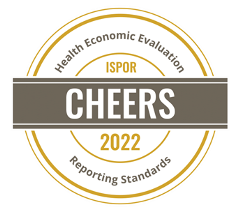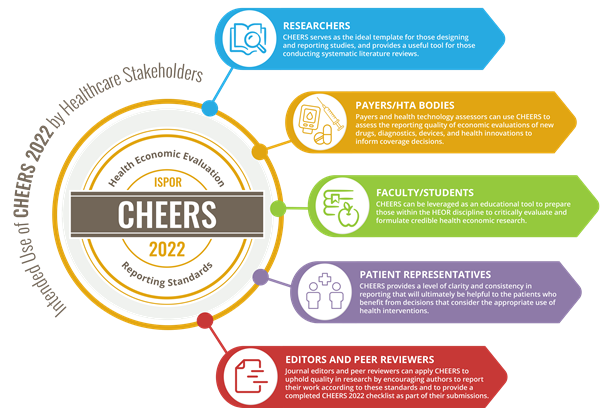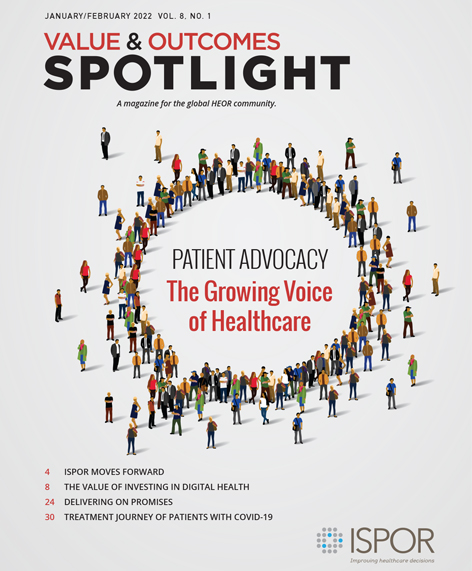Examining the Impact of CHEERS 2022

A new CHEERS 2022 report (“Consolidated Health Economic Evaluation Reporting Standards (CHEERS) 2022 Explanation and Elaboration: A Report of the ISPOR CHEERS II Good Practices Task Force”) was published in the January issue of Value in Health. In addition to the full report, 16 other journals (including ISPOR’s own Value in Health Regional Issues, which published a Spanish translation) co-published a summary statement endorsing the updated CHEERS reporting standards.
The initial CHEERS report was published in 2013 and has quickly become one of ISPOR’s most highly cited Good Practices Reports. In light of its overall impact in the health economics and outcomes research (HEOR) field, Zeba M. Khan, RPh, PhD (Editor-in-Chief of Value & Outcomes Spotlight) sat down with the CHEERS Task Force Co-Chairs, Don Husereau, BScPharm, MSc, and Michael F. Drummond, MCom, DPhil, to give us a better understanding of what exactly the CHEERS reporting standards are, what precipitated the update in 2022, why our readers should care about this update, and whether the CHEERS health economic evaluation reporting standards will help improve healthcare decisions.
We have created a 5-minute video that captures the highlights of the CHEERS 2022 update, with a transcript of the discussion below.
Stay tuned for future installments of the full-length videos of each interview question and responses.
What is CHEERS?
Zeba Khan: Hello everyone. I’m Zeba Khan, ISPOR’s Editor-in-Chief for Value & Outcomes Spotlight. I’m joined here with our two task force chairs, Professor Mike Drummond and Don Husereau. We will be discussing what is CHEERS and why this is important and may be useful for us as stakeholders.
The first CHEERS report was published back in 2013 and has become one of ISPOR’s highly cited Good Practices Reports. Can you explain what the CHEERS report is and why is it important?
Don Husereau: CHEERS is an attempt to take reporting guidance that had existed in various forms and consolidate it into one useful, existing reporting guidance. It also takes into account the latest thinking in terms of how economic evaluation should be reported. We called it the “Consolidated Health Economic Evaluation Reporting Standards” (CHEERS) because we had revisited all the reporting guidance that had been developed to date and tried to make something that represented the minimal amount of information that was necessary for people to make sense of economic evaluations.
Michael Drummond: Maybe I could add to what Don said and to point out that CHEERS has been adopted as one of the guidelines in the EQUATOR Network. I think people will be familiar with CONSORT and STROBE and PRISMA, and CHEERS has that status as well as being an ISPOR Task Force Report.
What precipitated this update?
ZK: Regarding the update to the CHEERS report, we know it was just released in Value in Health. My question to you is what really precipitated that update and why do you feel the time was right for an update now?
MD: Well, there were basically two reasons why we felt it was time to update CHEERS. The first one is that there’ve been developments in the field of economic evaluation since 2013. Two areas in particular are the way that value is being characterized. I think there was a feeling on the original CHEERS that we were just focusing on QALYs too much.
The other development has been the growth of distributional cost-effectiveness analysis (ie, the fact that we might care about who gets the benefits as well as the benefits in total). Then I think the other thing was that there have been developments in the environment in which we conduct economic evaluations, growing the use of these studies in decision-making settings.
I think the fact that there’s much more interest in transparency in research to make it absolutely clear what you’ve done and what you’ve not done. Then there’s a growing interest in incorporating patients and the general public in the developments in health services research. Taking all of that together, we felt it was time to revise CHEERS.
Why should Value & Outcomes Spotlight readers care?
ZK: The readers of Value & Outcomes Spotlight include both HEOR professionals and non-HEOR experts. Why should the readers of Value & Outcomes Spotlight care about this? What does it really mean for them? Can you just go into a little bit more specifics for us?
DH: Economic evaluations, although they’re often conducted and reported by specialists, have implications for everybody. They’re usually intended to help make important decisions about people’s health—that’s either your health now or your future health. We’re all patients or future patients. So, we need to care about the fact that we’re doing these analyses to inform decision making. Economic evaluations shouldn’t be opaque, they should be easy to understand.
CHEERS is there to make sure that all the information that’s there to help us understand is there—but in a structured way—so that we can make quick sense of what the study says and what it doesn’t say.
Will CHEERS help improve healthcare decisions?
ZK: I guess one thing I would like to ask is how do you see it being used in the HEOR community and beyond? ISPOR’s mission is to improve healthcare decisions—will this help improve healthcare decisions?
MD: Well, clearly as more and more economic evaluations get used in the context of health technology assessment, it’s important that the decision makers get good access to what’s been done in a particular study so that they can appraise it in making their decisions.
DH: But at the end of the day, it’s the person who’s reading the report, who’s using it for decision making, that has to be sure that it meets a certain standard. I think that’s what CHEERS is intending to do.
ZK: Well, this has been great. Don, Mike, thank you so much for sharing your insights into how CHEERS may be useful for all of us as various stakeholders and in various geographies to learn about this, leverage the tools, and help to improve healthcare decisions. Thank you so much…and I want to end by saying, “Cheers!”


